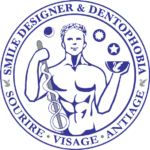The aesthetics of the teeth are improved
Chewing becomes easier again
THE CERAMIC PROSTHETIC DENTAL CROWN
IT IS THE MOST USED AESTHETIC SOLUTION.
TO ADDRESS THE PROBLEMS
OF DECAY AND DISGRACE OF THE TEETH
ceramic-ceramic dental crowns
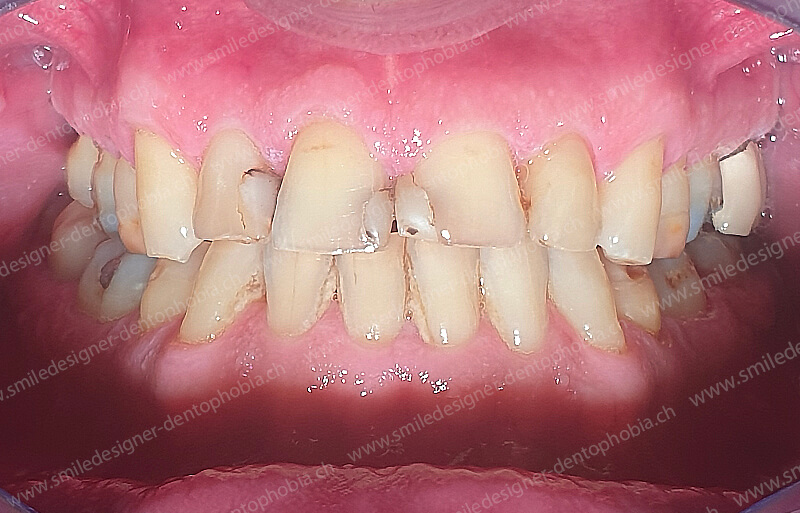
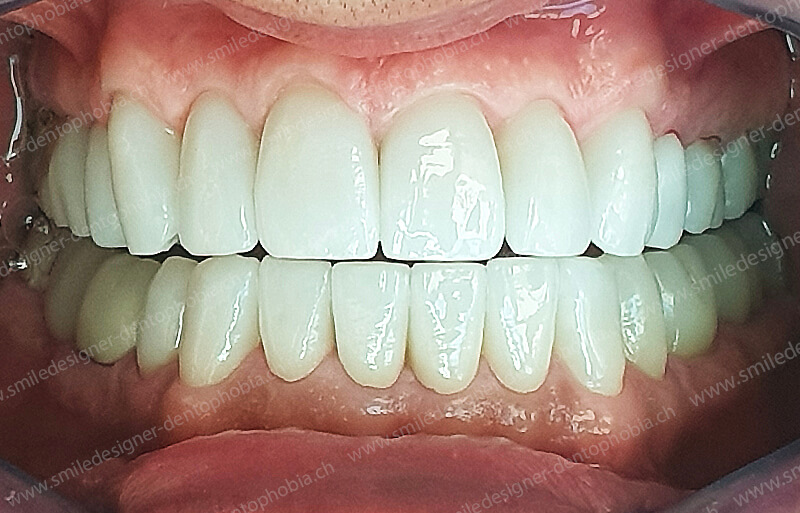


The ceramic prosthetic crown is the most aesthetic solution
The ceramic dental crown is a dental prosthesis that is attached to the dental root, whether it is natural or artificial such as a dental implant.
The aesthetics of the teeth of the smile are improved. Chewing becomes more normal and easy again.
The ceramic-on-metal crown (metal-ceramic crown) or zirconia (ceramic-ceramic crown) is a long-established technique.
This makes it one of the most used aesthetic solutions.
The dental surgeon can completely restructure the morphology of the natural crown of the tooth even if it is worn, diminished or even totally dilapidated.
HOW IS A DENTAL CROWN PLACED?
First, the tooth is trimmed. This consists of grinding the rest of the tooth.
There are two variants :
First variant : the tooth is not devitalized (we say living or vital)
In this case, it is usually necessary to reconstruct a ” stump ” of a truncated pyramid-shaped tooth with a bonded composite resin.
Second variant : the tooth is devitalized (we say non alive or pulped or that the endodontic or endo-canal treatment is performed).
In this case, as in the previous one, it is necessary to reconstitute a ” stump ” of tooth in truncated pyramidal shape with either
- a bonded composite resin
- A composite resin reconstruction cast and bonded into the tooth stump along a fibered post.
- An INLAY CORE : that is to say, a post cast to the shape of the tooth’s canal. It is manufactured in the prosthesis laboratory at :
- In precious or non-precious metal ;
- Made of metal or zirconium machined by CAD/CAM.
Once the tooth to be crowned is shaped, two impressions of the two dental arches (upper and lower) are taken :
- Or by a classic silicone impression material
- Either by a 3D digital intraoral camera
The silicone impressions or digital file is sent to the dental laboratory.
The latter will manufacture the zirconia framework using CAD/CAM technology in several steps:
- The prosthesis laboratory carries out the scan of the silicone impression of the size of the tooth to be crowned, made by the dental surgeon on his patient in the dental chair;
- If the dentist has a 3D scanning camera directly in the patient’s mouth, then this step is unnecessary, because the digital file of the impression is sent directly by internet to the prosthetic laboratory;
- The prosthetic laboratory draws the “design” of the framework thanks to computer-assisted modeling or CAD/CAM;
- The prosthetic laboratory manufactures the framework from the computer model in a zirconium block or disk using digital machining machines coupled to computers (CAD-CAM milling machines).
Then, once the parts are milled using CAD/CAM technology (i.e. CAD CAM), the cosmetic ceramics are mounted in the traditional way by the dental technician.
The technique is exactly the same for metal-ceramic crowns or ceramic-ceramic crowns or ceramic-on-zirconia crowns or zirconia-only crowns.
Metal-ceramic crowns are indicated on posterior teeth because they are very resistant.
Cosmetic ceramic crowns are usually cemented to the natural dentition.
When the teeth of the smile are damaged, the solution is the installation of cosmetic ceramic crowns, i.e. ceramic-ceramic crowns or ceramic crowns on zirconia. This aesthetic dental prosthesis replaces the natural crown of the damaged tooth (the visible part of the tooth).
If an implant replaces a root that was extracted in the past, it is called an implant-supported crown. The crowns can be placed on dental implants to replace missing teeth.
Cosmetic ceramic crowns on implants are either cemented to the abutment (itself screwed to the implant) or directly screwed or screwed onto the implants (using a screw and counter screw system).
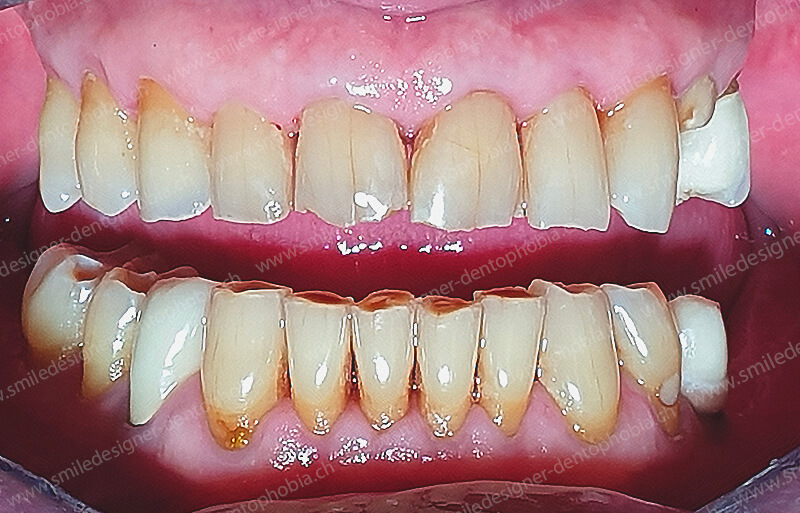
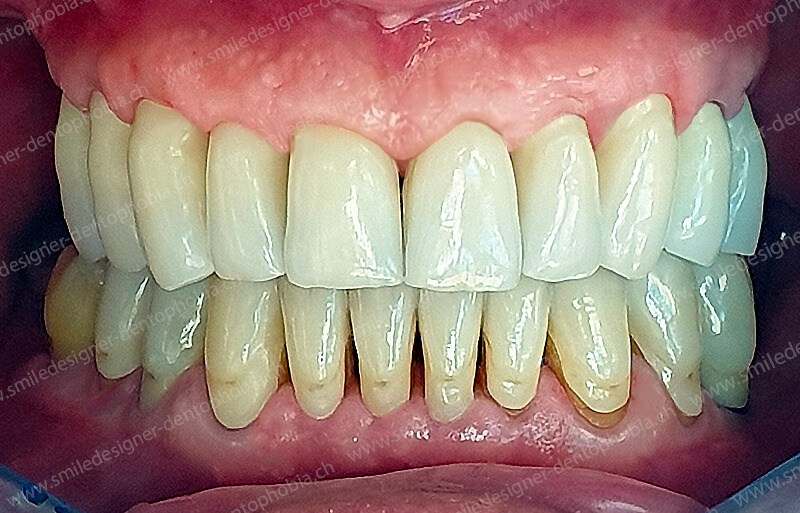
Our clinical outcome:
The replacement of teeth in the jawbone smile with aesthetic dento-crowns, first temporary with acrylic glass cosmetics and then permanent with ceramic cosmetics. Here on the picture.
Disclaimer: Even though we show satisfactory clinical results in our presentation photos, they can in no way be promises of similar success in your own clinical situation. Each person is different and each clinical case is unique
YOU ARE UNIQUE!
CLINICAL CASES SMILE RECONSTRUCTION WITH DENTAL CROWNS
When is the ceramic dental crown used?
Ceramic dental crowns are used to address the various problems of decaying teeth of patients.
Smile designer has today several techniques of manufacturing cosmetic ceramic crowns with a gradient in the aesthetic requirement.
The ceramic dental crown not only reconstructs the tooth or teeth, but also protects the dental root structure and the bone capital of the jaw.
Here are some of the cases in which a crown is used:
- Restore the function and aesthetics of a decayed tooth (worn, broken, damaged…)
- Protecting a tooth from a possible fracture
- Replacing a very stained tooth
- Rejuvenate your smile
Orthodontics, possibly combined with orthognathic maxillofacial surgery techniques, allows for the straightening of malpositioned teeth in order to be able to place aesthetic crowns under good conditions.
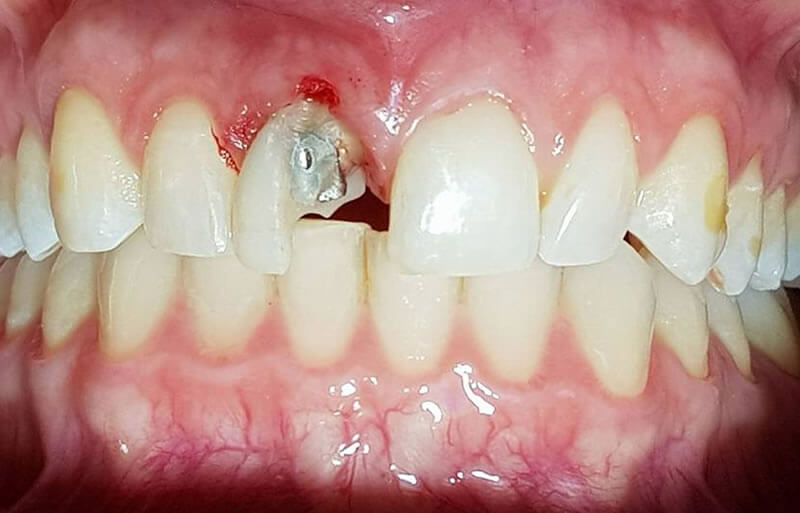
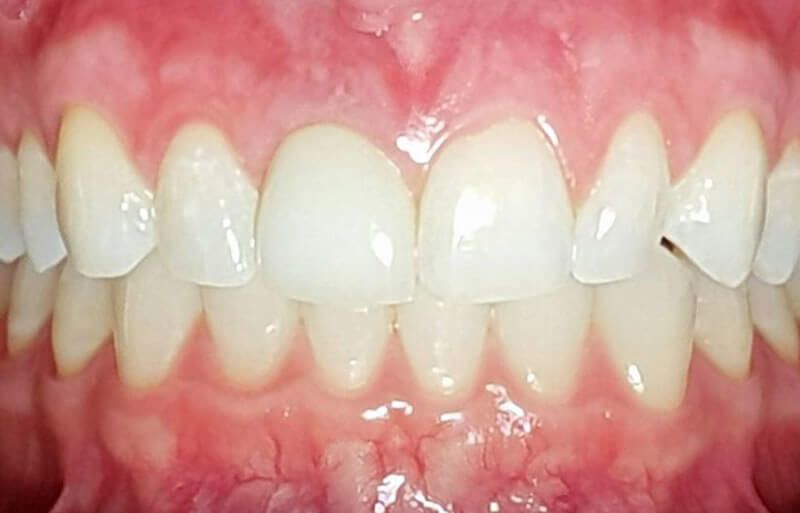
Our clinical outcome:
The replacement of a tooth in the maxillary smile with an aesthetic dento-crown, first temporary with an acrylic glass cosmetic and then permanent with a ceramic cosmetic. Here on the picture.
In these images of clinical results: replacement of an old crown on a fractured right central incisor following an impact.
See details of the protocol and clinical cases in the corresponding chapters.
Disclaimer: Even though we show satisfactory clinical results in our presentation photos, they can in no way be promises of similar success in your own clinical situation. Each person is different and each clinical case is unique
the digital age and new manufacturing technologies:
Design and Manufacturing
Computer Aided Design or CAD/CAM
HOW IS A DENTAL CROWN MADE?
Dental crowns are designed with cosmetic ceramics fired onto a framework. This framework can be made of precious metal, non-precious metal, pressed ceramic or more recently zirconia. It appears that zirconia manufactured with CAD/CAM techniques will replace previous techniques.
New manufacturing technology: CAD/CAM
The new techniques of manufacturing a dental prosthetic crown are optimized thanks to 3D digital technologies such as CAD/CAM or Computer Aided Design and Manufacturing:
According to the most recent techniques and different ceramic labels, there are two ways to proceed, in general:
1 - First variant: the crown is entirely manufactured by the zirconium machining center according to a model made from the specific program of the prosthesis laboratory. The advantage of zirconia is its aesthetics: light-colored like a tooth with a color gradient and even a hardness gradient, it creates a tooth with a perfect anatomy (morphology) of extreme precision.
2 - Second variant: The aesthetics of the ceramic crown is achieved with a cosmetic ceramic sculpted by the prosthetist on a zirconium framework previously fabricated in CAD/CAM. This framework is the skeleton of the crown. It is made from a model of the shape of the tooth (or teeth) to be replaced and its skeleton.
This cosmetic ceramic, most often feldspathic, is sculpted and then fired on the framework in the same way as for the fabrication of a traditional ceramic crown on a metal framework.
The advantage of zirconia is that this framework (skeleton) is tooth-colored. It does not cast a shadow on the cosmetic ceramic of the crown, as metal does.
In addition, it presents fewer technical problems when it is retouched, as it oxidizes very little during its passage through the oven.
WE ANSWER YOUR QUESTIONS
on dental crowns
The dentist answers your most frequently asked questions. If your question is not listed, please schedule a teleconsultation for an accurate answer.
The price of a dental crown varies according to the type and material chosen; the location; the number of teeth to be crowned. The price is in the range of 500 to 1700 euros depending on the technical difficulty and the aesthetic requirements of the patient.
Before any decision is made, the Dr.’s office will provide you with a treatment plan and a financial agreement (estimate) following the diagnosis.
Untreated periodontal disease (periodontitis, gingivitis) is a relative contraindication to the placement of crowns. The treatment and stability of these periodontal pathologies is the prerequisite before the prosthetic phase.
Bruxism is a relative contraindication to crowns. Or rather, some fragile crowns will have to be protected by wearing a splint (mainly at night) to limit the risk of breakage or abnormal wear of the ceramic.
Ceramic crowns will darken slightly in the months following their installation. This phenomenon is normal and the consequence of the hydration of the material in the saliva.
Patients who smoke, especially cigars, will slightly darken the color of the ceramics in the first 6 months. Then the color will stabilize. It is best to anticipate this phenomenon by choosing a slightly lighter shade.
On the other hand, it is impossible to “whiten” or lighten metal-ceramic crowns or ceramic-on-zirconia crowns or zirconia crowns.
This is why it is preferable to whiten the teeth before placing ceramic crowns on the teeth of the smile to benefit from the lightest possible shade. After the installation of the metal-ceramic crowns or ceramic-ceramic crowns or ceramic-on-zirconia crowns or zircon crowns, it will be too late.
Metal-ceramic crowns or ceramic-ceramic crowns or ceramic-on-zirconia crowns or zirconia crowns are made of materials that will survive us and beyond for many centuries.
It is the support of the crown, that is to say your tooth that will age. This aging process is supposed to be delayed by the installation of a well-made crown.
But sometimes the poor quality of the work leads to anticipated problems that condemn the tooth and its crown.
This is called iatrogenicity or iatrogenic care.



